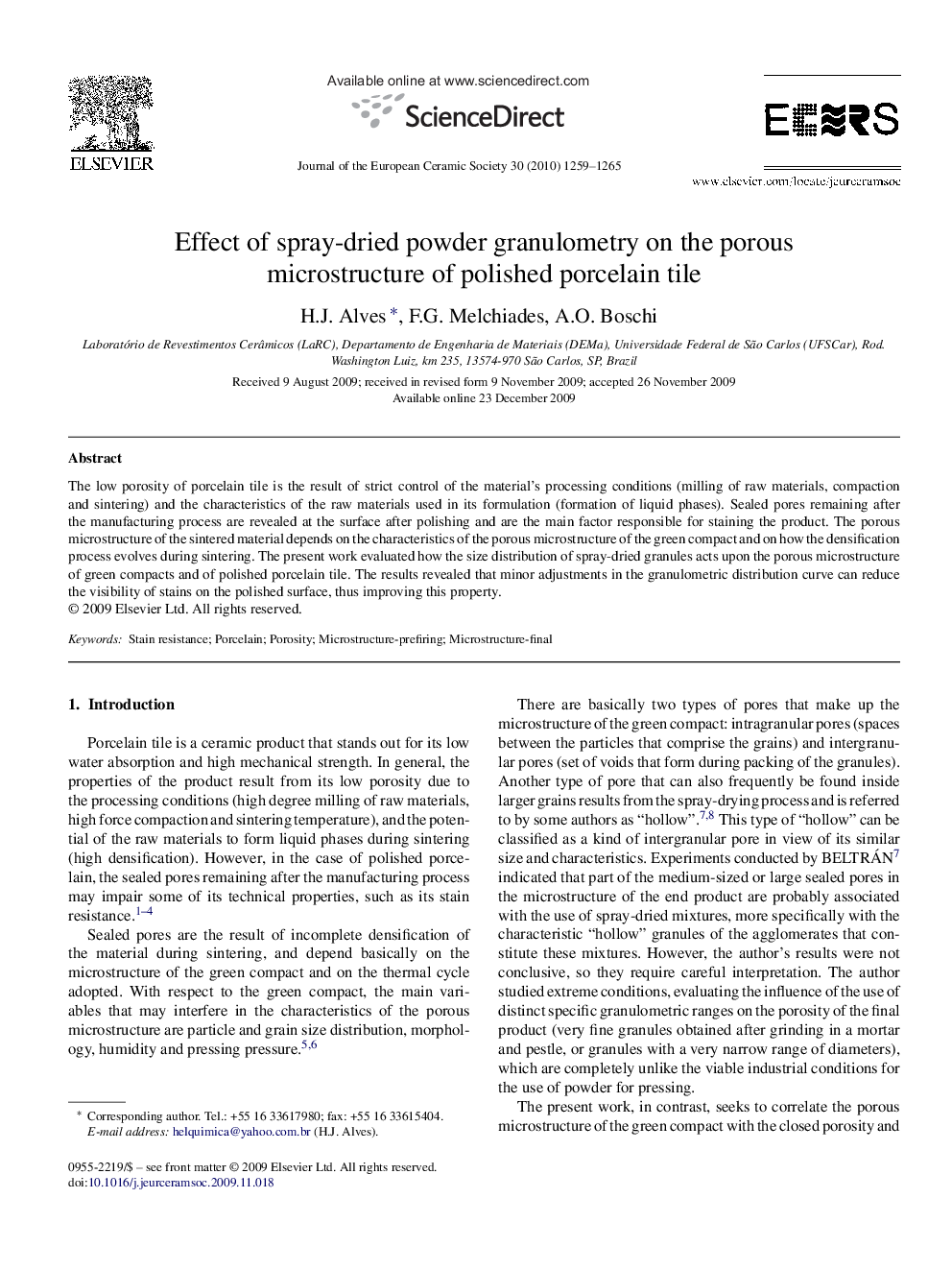| Article ID | Journal | Published Year | Pages | File Type |
|---|---|---|---|---|
| 1474770 | Journal of the European Ceramic Society | 2010 | 7 Pages |
The low porosity of porcelain tile is the result of strict control of the material's processing conditions (milling of raw materials, compaction and sintering) and the characteristics of the raw materials used in its formulation (formation of liquid phases). Sealed pores remaining after the manufacturing process are revealed at the surface after polishing and are the main factor responsible for staining the product. The porous microstructure of the sintered material depends on the characteristics of the porous microstructure of the green compact and on how the densification process evolves during sintering. The present work evaluated how the size distribution of spray-dried granules acts upon the porous microstructure of green compacts and of polished porcelain tile. The results revealed that minor adjustments in the granulometric distribution curve can reduce the visibility of stains on the polished surface, thus improving this property.
